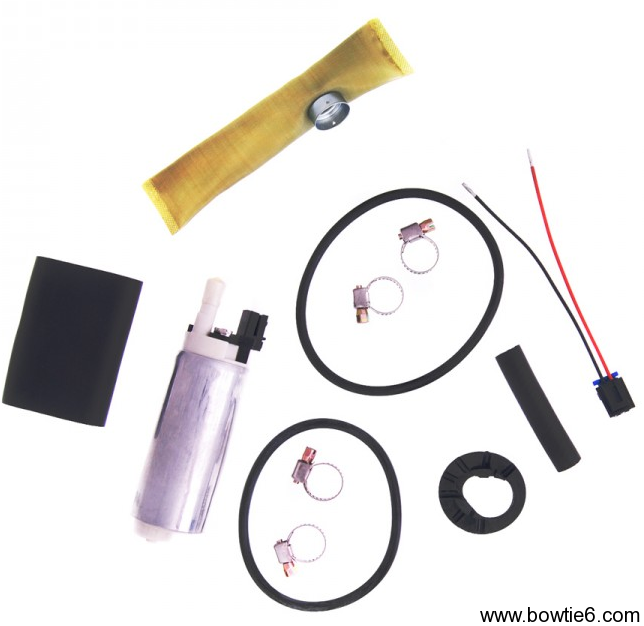Supplying fuel to the Ecotec required a special delivery system. Unlike the system we had in place for the V6, the Ecotec is a “returnless” design. I’ll get back to that, but first let me describe what we had before with the V6.
The V6’s fuel rail required a “loop” for the fuel to flow in. So a special made aluminium tank was made to fit the stock fuel tank location. Since we wanted to extend the range, the tank was made larger. This tank has two bungs, one is an output and the other a return. The output was connected to an external high pressure fuel pump and plumbed to supply fuel to the fuel pressure regulator and ultimately the fuel rail up front on the engine. A return line was also plumbed and this dumped unspent fuel back to the tank. This is a “return” fuel system.
There are advantages to this design. The pump can be easily serviced and replaced if needed. However, these high pressure pumps are getting a little expensive these days. Another advantage is that the fuel returns back to the tank and ensures a fresh supply of “cool” fuel – no vapour lock. The big disadvantage and something that really screws up folks doing conversions is the tank must be modified (unless specifically designed like mine) to have a return line bung.
The Ecotec however, is part of the new design that does not use a return line. With this system, there is a single line going to the fuel rail constantly supplying high pressure fuel to the injectors. This posed some challenges for us. Since we had made that nice alumimium tank, we did not feel like pulling it out and making a new one with only one output instead of the two used by the return system.
This is what it looks like now:

Whoa! This looks busy. Well, let me explain what is going on. The fuel tank is covered with the black carpet. At the very bottom, on the extreme right is the former “return” line input. On the bottom of the tank you see another line feeding the small box on the left. That is now the supply line into the small box holding the high pressure fuel pump (see picture below). The fuel pump box above has two lines going up ending in blue fittings. They supply high pressure fuel into the new fuel pressure regulator and combined fuel filter. So you see, excess fuel goes back directly to the pump box. The silver braided line coming out of the regulator feeds a stainless line that runs on the frame and feeds the fuel rail up front with high pressure fuel. Very neat, and only one line goes forward.
This is what the fuel pump looks like. The pump has a “sock” that mounts to the input side. This is a pre-filter. The rest of the bits are the rubber isolation tube on the left and the wiring adapter. This is all GM as fitted to Corvettes.

OK – there is a reason for all this. If you look closely at the tank you see a protrusion at the very bottom. Even though the tank is baffled, when doing heavy cornering fuel has a tendency to starve the pump. We solved that by making a special lower compartment that will not allow that. Kinda like a windage tray on an oil pan.

The fuel pump tank (the small box) as described previously contains a submerged GM high pressure fuel pump. The box has a “lid” held by several screws and machined to hold Vitrol “O” rings to keep fuel from leaking. This is a tight seal. The rubber line at the top of the fuel pump box allows air to escape, allowing the box to always be full of fuel.
The tank holds about 15 gallons and the small box holds about another gallon (give or take). The beauty of all this is the fuel pump box always contains fuel. When taking turns at high speed this all now ensured no fuel starvation.
Of course all this comes at a price. All this has taken up precious space in the trunk but then again, I don’t carry a bunch of wrenches and spare parts like many other owners of “originally” restored cars do. Furthermore, the extra fuel capacity offers a much more respectable driving range: I have already been able to get 350 miles of city driving from a tankfull and still had some fuel left in the tank before filling it back. I am hoping that once I get bowtie6 on a long trip on an interstate, I can reach the 400 mile mark. Not too bad huh?
One more picture showing the custom made aluminium battery box housing an Optima Red Top battery. Behind the battery box is the Triumph “bleed” tank that is plumbed to the fuel tank filler neck and allows fumes to be routed back to the intake side of the engine.








